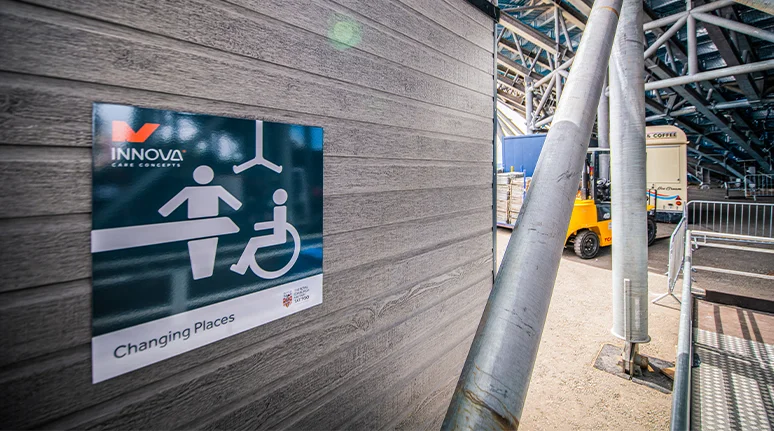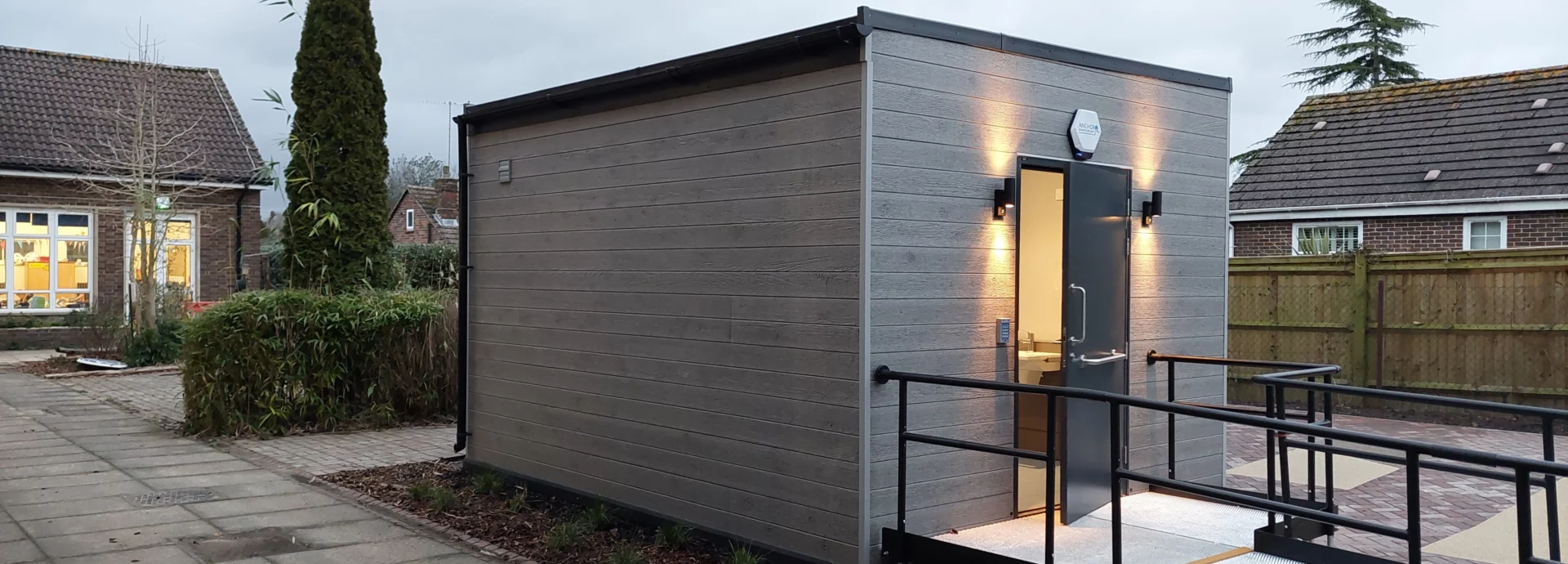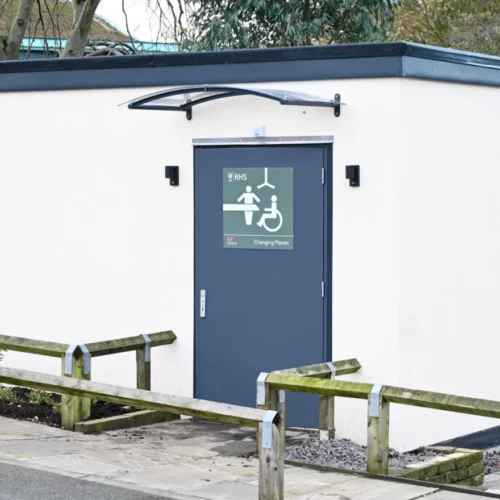Why Location Matters
Accessibility isn’t just about design; it’s also about proximity. Placing a Changing Places facility in the right spot means that it will be available when and where people need it most. The right location for a Changing Places toilet can empower individuals to participate more fully in community life, from going shopping to attending events or travelling.

A new modular Changing Places opened at Thrigby Hall Wildlife Gardens.
High-Footfall Public Areas
One of the first things to consider is footfall. The facility should be where people naturally gather or travel through. Examples include:
- Town centres and high streets
- Major public transport hubs
- Leisure centres, stadiums, or large entertainment venues
- Large shopping centres and supermarkets
- Tourist attractions and parks
By placing a Changing Places toilet in a high-traffic area, you increase the chances it will be both noticed and used.
Proximity to Other Facilities
It’s essential to think about how the location for a Changing Places facility complements other amenities. Ideally, it should be close to:
- Disabled parking bays
- Main entrances or exits
Reception or information desks - Other public toilets (standard and accessible)
This not only helps with visibility, but ensures it is part of a wider commitment to accessibility.
Transport Accessibility
Many users of Changing Places toilets rely on public transport or adapted vehicles. A good location should be easily reachable by:
- Bus or train services with accessible stops nearby
- Drop-off points for disabled users
- Clearly marked pedestrian routes with level access
If it’s difficult to get to, people won’t use it, regardless of how well-designed the facility is.
Community Consultation
Engaging with local disabled groups, carers, and access consultants can provide invaluable insight into where the need is greatest. Ask questions like:
- Where do people feel excluded due to a lack of facilities?
- Are there venues people avoid because there’s no suitable toilet nearby?
- What locations would improve their quality of life or independence?
Their input ensures your chosen location serves real needs rather than assumptions.
Future-Proofing and Scalability
Think long-term. Will the area grow or be redeveloped in the coming years? Is there room to upgrade or expand the facility if needed? Selecting a site that accommodates future needs avoids having to relocate or rebuild later on.

Visibility and Signage
Even if the facility is perfectly placed, it must also be seen. Clear, consistent signage – both physical and digital – can make all the difference. Make sure:
- Directional signs are placed in nearby streets and venues
- It is listed on national Changing Places maps and apps
- Local organisations are aware of their presence
The more visible the facility, the more people it can serve.
Summary
Choosing the right location for a Changing Places toilet is about more than ticking a box for accessibility compliance; it’s about ensuring dignity, equality, and independence. With the right planning, you can make a genuine difference to the lives of people with complex disabilities and their carers, enabling full participation in community life.
FAQs
1. What is the minimum size requirement for a Changing Places toilet?
A Changing Places toilet must be at least 12 square metres, with a ceiling height of 2.4m, to accommodate a hoist, changing bench, and turning space for a wheelchair.
2. Can you retrofit a Changing Places toilet into an existing building?
Yes, although it depends on available space, structural limitations, and access routes. Expert assessment is recommended before installation.
3. Who funds Changing Places toilets?
Funding can come from local authorities, government grants, community fundraising, or private business investment, especially in public venues.
4. Do all public places need a Changing Places toilet?
Not all, but under UK building regulations (Part M and BS 8300), certain large public buildings like shopping centres and new stadiums are now required to include one.
5. How do I find the best location for a Changing Places toilet in my town?
Conduct a needs assessment, review footfall and transport data, and consult with local disability groups to ensure your chosen site delivers maximum benefit.



